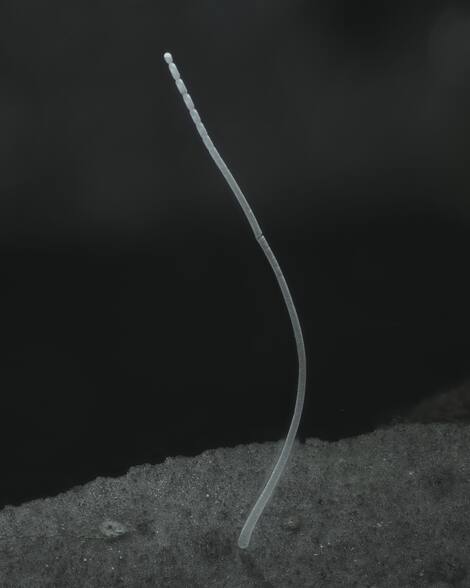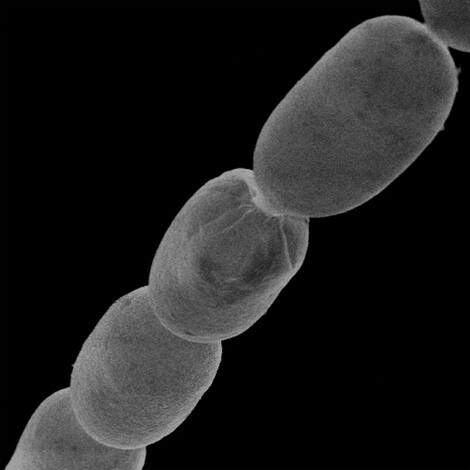It can be caught with tweezers: the world’s largest bacterium, 5,000 times larger than its counterparts and with a much more complex structure, discovered in Guadeloupe, according to a study published Thursday in the journal Science.
The “thiomargarita magnifica” measures up to two centimeters, looks like an “eyelid” and moves the symbols of microbiology, as described by AFP Oliver Cross, professor of biology at the University of the West Indies, co-author of the study.
In his laboratory on the Pouillol campus, at Pointe-à-Pitre, the researcher proudly shows a test tube with small white fibers. When the average size of a bacterium is two to five micrometers, he wonders, “I can see with the naked eye, I can pick it up with tweezers!”
The researcher first observed the microbe in 2009 in the Guadeloupe swamp.

AFP
“At first I thought it’s a bacterium, because two centimeters can not be one.”
Very quickly, the techniques of cellular interpretation by electronic microscope show that it is actually a bacterial organism. But with this size, Professor Cross says, “we have no guarantee that this is a single cell” – a bacterium is a unicellular microbe.
A biologist from the same laboratory reveals that it belongs to the Theomargarita family, a type of bacterium that is already being developed using sulfides.
The work carried out in Paris by the CNRS researcher says that we are dealing with a “single cell”, explains Professor Cross.
Relying on their discovery, the team attempts the first publication in a scientific journal, which fails. “We were told: this is interesting, but we do not have the information to believe you,” the biologist recalled.
Enter Jean-Marie Volland, a young graduate student at the University of the West Indies, who will become the first author of a study published in science. The 30-year-old flew to the United States, where he was hired by the University of Berkeley because he did not get a teaching-researcher position in Guadeloupe. He had in mind to go there and read about the “incredible bacteria” he already knew.

AFP
“It’s like meeting a man as tall as Mount Everest,” he thought to himself. In the fall of 2018, he received the first set sent by Professor Cross to the Institute for Genetic Sequencing at the Lawrence Berkeley National Laboratory, which is managed by the University.
The challenge was essentially technical: “Three-dimensional microscopic analysis, at high magnification” must succeed in presenting the image of the bacterium as a whole. In the American laboratory, the researcher had advanced techniques. Not forgetting the significant financial assistance and “access to expert researchers in the genetic sequence”, he recognized the scientist and qualified this US-Guadeloupe collaboration as a “success story”.
Its 3D images help to finally prove that the whole fiber is actually a cell.
Besides its “gigantism”, the bacterium turns out to be “more complex” than its counterparts: a “completely unexpected” discovery that “shakes up a little knowledge in microbiology,” the researcher testified.
“Normally in bacteria, DNA floats freely in the cell, in which it compresses into tiny structures called pips, a kind of tiny sac enclosed by a membrane that isolates DNA from the rest of the cell,” the gene-generator said. Mary Woland.
This segmentation of DNA, the carrier molecule of genetic information, is “characteristic of human, animal, and plant cells … not of bacteria.”
Future research suggests that future research may be needed to determine whether these traits are specific to Theomargarita magnifica or whether they are found in other types of bacteria.
“This bacterium calls into question many of the rules established in giant microbiology” and “allows us to observe and understand how complexity manifests itself in living bacteria,” exclaims Jean-Marie Woland.
 The Press Stories
The Press Stories

